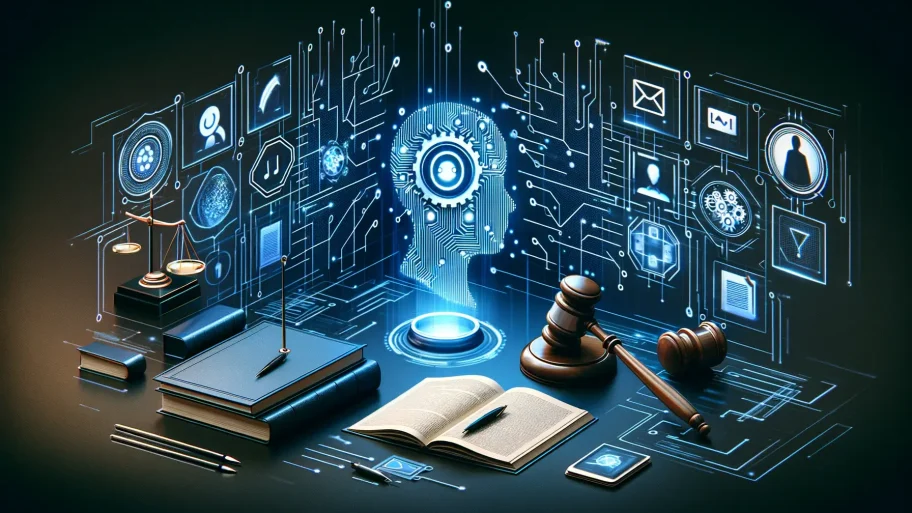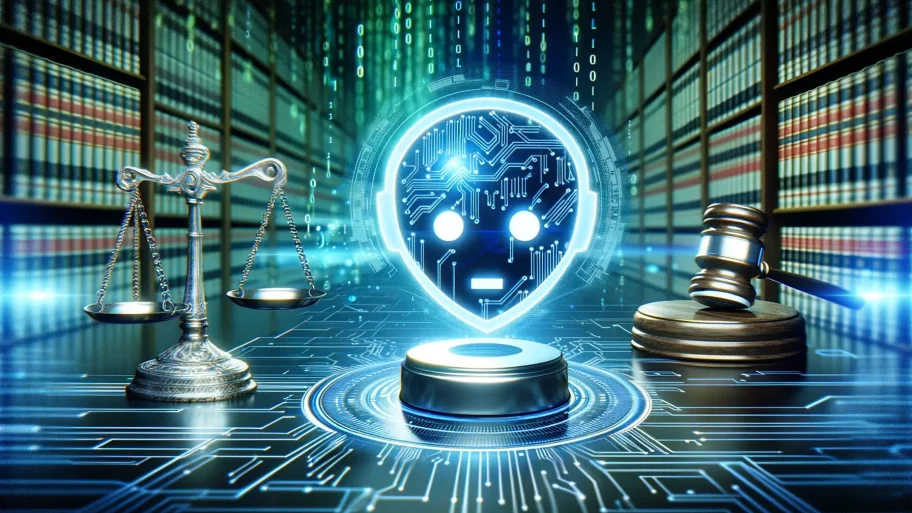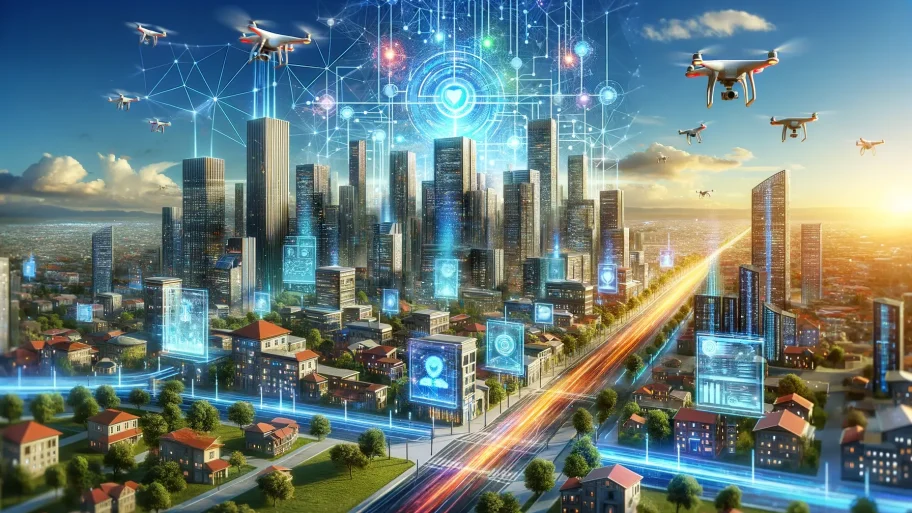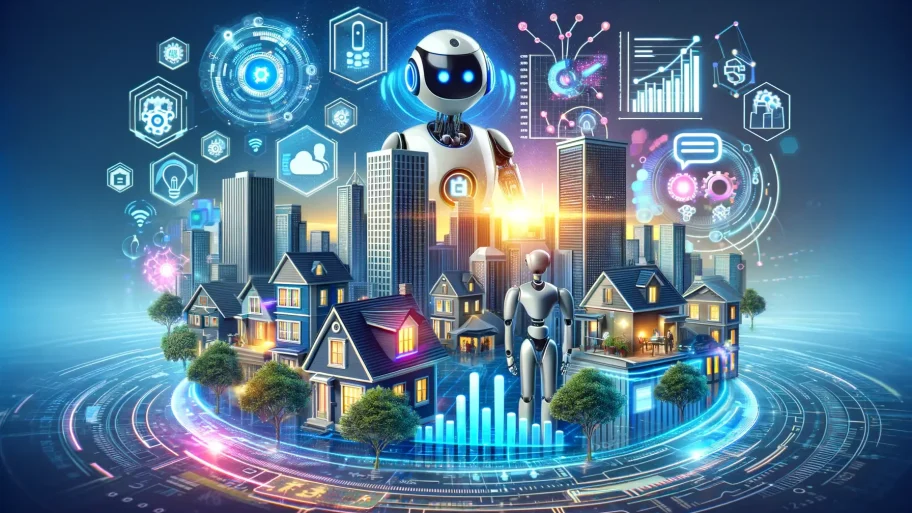Top 5 AI Use Cases In Food Safety Compliance
- By Matt

Attention Food Industry Professionals and Tech Enthusiasts!
The food industry faces looming threats of contamination, foodborne illnesses, and regulatory non-compliance. These dangers are not distant possibilities but imminent risks that demand immediate action. Integrating AI into your food safety compliance strategies is critical to avoiding these costly and hazardous issues.
In this article, we’ll reveal how AI can revolutionize food safety compliance, helping you mitigate these serious risks.
Key Takeaways
- Real-Time Hazard Detection ensures immediate identification and response to food safety hazards.
- Predictive Analytics for Risk Assessment mitigates potential food safety risks before they escalate.
- Automated Quality Control maintains consistent safety standards through AI-driven inspection processes.
- Food Traceability Systems enhance transparency and accountability in the supply chain.
- Contaminant Detection identifies and isolates contaminants quickly and accurately.
Use Case #5: Food Traceability Enhanced by AI
Starting our countdown at number 5 is the revolutionary application of AI in food traceability, ensuring transparency and accountability from farm to fork.
The Fear of Food Contamination
Food contamination can lead to severe health risks and regulatory penalties. Without robust traceability, identifying the source of contamination is a daunting task, exacerbating the crisis.
This fear of contamination creates stress and uncertainty, making it challenging to manage food safety effectively.
Impacts of Poor Traceability
- Increased health risks
- Regulatory penalties
- Loss of consumer trust
- Higher recall costs
How AI Enhances Food Traceability
AI-driven traceability systems track food products through every stage of the supply chain. Using advanced data analytics, these systems provide real-time insights into the origin and handling of food items.
Implementing AI for food traceability ensures quick identification of contamination sources, enhancing transparency and safety.
Table 1: Key Benefits of AI-Powered Food Traceability
| Benefit | Description |
|---|---|
| Enhanced Transparency | Real-time tracking of food products |
| Quick Contamination Response | Faster identification of contamination sources |
| Improved Accountability | Detailed records of each supply chain stage |
| Consumer Trust | Increased confidence in food safety |
Table 1 highlights the significant benefits of implementing AI-powered food traceability within food production.
The Future of Food Traceability
AI-powered food traceability transforms how food safety is managed, providing advanced tools to ensure transparency and accountability. This technology significantly reduces contamination risks and improves consumer trust.
As AI continues to evolve, traceability systems will become even more sophisticated, further enhancing the safety and integrity of the food supply chain.
Use Case #4: AI-Driven Risk Assessment
Utilizing AI for risk assessment provides predictive insights, enabling proactive measures to prevent food safety hazards before they occur.
The Anxiety of Unpredictable Risks
Unforeseen food safety risks can lead to severe health issues and substantial economic losses. Traditional risk assessment methods often fail to predict emerging threats, leaving gaps in food safety management.
This unpredictability adds anxiety to food production, compromising safety and compliance.
Challenges in Risk Assessment
- Inaccurate predictions
- Delayed response to hazards
- Economic losses
- Compliance failures
AI-Powered Risk Assessment
AI leverages predictive analytics to assess potential risks by analyzing historical and real-time data. This enables proactive measures to address threats before they materialize.
Implementing AI for risk assessment enhances safety by providing accurate predictions and timely interventions.
Table 2: Key Benefits of AI-Driven Risk Assessment
| Benefit | Description |
|---|---|
| Accurate Predictions | Reliable risk forecasts based on data analysis |
| Proactive Measures | Timely interventions to prevent hazards |
| Cost Savings | Reduced losses from prevented risks |
| Compliance Assurance | Meeting safety regulations proactively |
Table 2 outlines the benefits of AI-driven risk assessment for food safety management.
The Role of AI in Risk Management
AI-driven risk assessment provides the tools needed to predict and mitigate food safety hazards, reducing the likelihood of contamination and compliance issues.
As AI continues to advance, risk prediction models will become more precise, further enhancing the safety and efficiency of food production operations.
Use Case #3: AI-Enhanced Contaminant Detection
Applying AI in contaminant detection enables quick and accurate identification of harmful substances in food products, ensuring consumer safety and regulatory compliance.
The Threat of Undetected Contaminants
Undetected contaminants in food products pose severe health risks and legal consequences. Traditional detection methods are often slow and less accurate, leaving room for dangerous substances to go unnoticed.
This threat of contamination creates fear and urgency in food safety management, demanding more reliable solutions.
Challenges in Contaminant Detection
- Slow detection processes
- High error rates
- Health hazards
- Regulatory penalties
AI-Enhanced Contaminant Detection
AI utilizes machine learning algorithms to quickly and accurately identify contaminants. This technology can analyze large datasets, recognizing patterns that indicate the presence of harmful substances.
Implementing AI for contaminant detection ensures faster and more reliable identification of hazards, protecting consumer health.
Table 3: Key Benefits of AI-Enhanced Contaminant Detection
| Benefit | Description |
|---|---|
| Rapid Detection | Quick identification of contaminants |
| High Accuracy | Precise detection reducing false positives |
| Improved Safety | Better protection against health risks |
| Regulatory Compliance | Meeting safety standards more effectively |
Table 3 highlights the benefits of AI-enhanced contaminant detection in food safety.
Innovations in Contaminant Detection
AI-enhanced contaminant detection transforms the ability to identify harmful substances quickly and accurately, ensuring higher standards of food safety.
As AI technology progresses, detection systems will become even more effective, further safeguarding public health and maintaining regulatory compliance.
Use Case #2: Automated Quality Control
Integrating AI into quality control processes ensures consistent product standards and compliance, enhancing customer satisfaction and operational efficiency.
The Challenge of Maintaining Consistent Quality
Inconsistent quality in food products can lead to dissatisfied customers and regulatory issues. Manual quality control processes are time-consuming and prone to errors, impacting overall production efficiency.
This inconsistency in quality control adds stress to managing food production, making it difficult to maintain high standards and control costs.
Impacts of Poor Quality Control
- Customer dissatisfaction
- Regulatory compliance issues
- Increased operational costs
- Reduced production efficiency
AI-Driven Quality Control
AI-driven quality control systems use advanced sensors and machine learning algorithms to monitor product quality in real-time. This ensures that any deviations are quickly identified and addressed, maintaining consistent standards.
Implementing AI for quality control improves product consistency, reduces costs, and enhances overall efficiency in food production.
Table 4: Key Benefits of AI-Driven Quality Control
| Benefit | Description |
|---|---|
| Improved Consistency | Real-time monitoring ensures uniform product quality |
| Regulatory Compliance | Automated systems help meet regulatory standards |
| Cost Savings | Reduced need for manual inspections lowers costs |
| Enhanced Efficiency | Automation speeds up quality control processes |
Table 4 outlines the benefits of AI-driven quality control in food production.
The Role of AI in Quality Control
AI-driven quality control ensures consistent product standards and regulatory compliance, reducing costs and enhancing overall efficiency in food production. This technology minimizes errors and streamlines quality control processes, ensuring high-quality products and customer satisfaction.
As AI continues to advance, quality control systems will become even more precise, further improving efficiency and reducing operational costs.
Use Case #1: Predictive Maintenance
Leveraging AI for predictive maintenance revolutionizes equipment reliability in food production facilities, minimizing downtime and maximizing equipment lifespan.
The Stress of Unpredictable Equipment Failures
Equipment failures can be unpredictable and disruptive, leading to operational downtime and increased repair costs. Managing these failures adds stress and complexity to food production operations.
Without a reliable maintenance strategy, equipment failures can cause significant disruptions, impacting efficiency and profitability.
Impacts of Unpredictable Equipment Failures
- Operational disruptions
- Increased repair costs
- Unexpected downtime
- Supply chain inefficiencies
How AI Enhances Equipment Reliability
AI-driven predictive maintenance uses sensors and historical data to forecast equipment failures before they occur. This proactive approach allows for scheduled maintenance, extending equipment lifespan and reducing repair costs.
Implementing AI for predictive maintenance enhances equipment reliability, minimizes downtime, and boosts overall efficiency in food production facilities.
Table 5: Key Benefits of Predictive Maintenance
| Benefit | Description |
|---|---|
| Reduced Downtime | Proactive maintenance prevents unexpected failures |
| Extended Equipment Lifespan | Timely interventions extend equipment life |
| Cost Savings | Reduced repair costs and avoided downtime expenses |
| Enhanced Productivity | Optimal equipment performance boosts productivity |
Table 5 highlights the significant benefits of implementing predictive maintenance in food production facilities.
Maximizing Equipment Reliability with AI
Predictive maintenance transforms equipment reliability management by leveraging AI to forecast potential failures. This forward-looking approach minimizes unexpected breakdowns and optimizes operational efficiency.
As AI technology continues to advance, the predictive capabilities will become even more precise, further reducing downtime and enhancing the overall productivity of food production facilities.
Conclusion
In the rapidly evolving food production industry, inefficiencies, inconsistent quality, and rising costs are critical threats to your business.
Neglecting to integrate these advanced technologies means missing out on opportunities for increased efficiency, cost savings, and enhanced product quality. Ensure your food production operations are safe, compliant, and efficient by embracing AI-driven solutions today.
Latest Posts
- By Matt | 9 months ago
- By Matt | 1 year ago
- By Matt | 1 year ago
- By Matt | 1 year ago
- By Matt | 1 year ago
- By Matt | 1 year ago
- By Matt | 1 year ago
There are no results matching your search Reset filters?
Trending
There are no results matching your search Reset filters?






